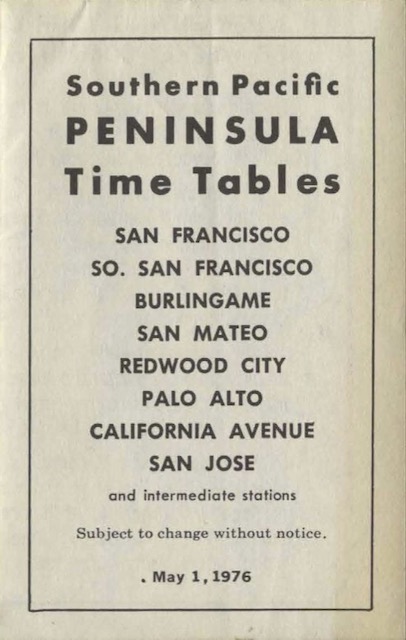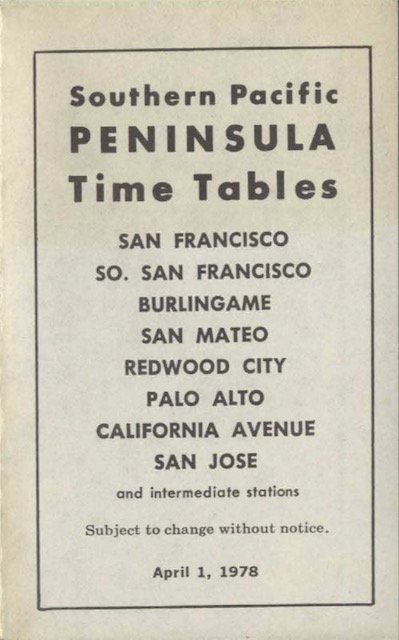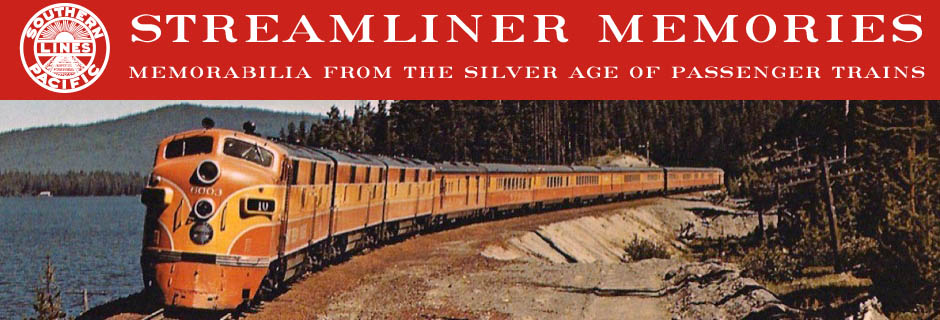Although Amtrak took over most long-distance trains in 1971, Southern Pacific continued to operate its San Francisco-to-San Jose commuter trains. The state of California began subsidizing these trains in 1980. In 1991, a regional entity known as the Peninsula Corridor Joint Powers Board, now doing business as Caltrain, purchased the tracks from SP and began operating the trains.
 Click image to download a 1.0-MB PDF of this timetable.
Click image to download a 1.0-MB PDF of this timetable.
This means the timetables shown here are pure Southern Pacific. Note that the timetable makes no mention of Los Gatos, which was the terminus of some of the trains in the 1943 timetable. Los Gatos is listed on the cover of the 1968 timetable shown here a few days ago, but it isn’t listed in the schedules as SP stopped serving that community in 1959.
 Click image to download a 1.0-MB PDF of this timetable.
Click image to download a 1.0-MB PDF of this timetable.
I rode one of Southern Pacific’s commuter trains once in about 1980 and discovered why mass transit, which worked so well in San Francisco, didn’t work in the suburbs. I was heading to a meeting in Menlo Park, so I took the train from San Francisco to the Menlo Park stop only to find that I was still miles away from the meeting. Commuter trains work for people who both live and work near a station, but even in dense urban areas such as the San Francisco Bay Area, that’s only a minority.
